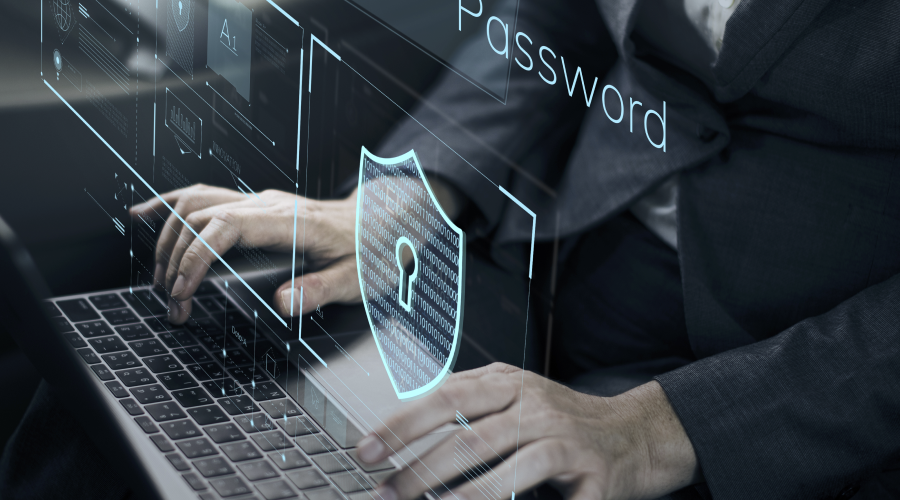Private Data: StealthMail Redefines Advanced Email Protection For Enterprises
2. Januar 2020

Advanced email threats such as zero-day, malware, ransomware, man-in-the-middle, social-engineering techniques, phishing attacks, and many others are real threats to an enterprise’s email. This list, or arsenal of cyber-weapons so to speak, is far from its end.
The modern breach-loader cyber criminals use to compromise corporate data helps their cyber-weapons fire for an effect only.
It is the so-called spear phishing method. Spear phishing is the type of phishing threat that targets specific individuals or companies. Spear phishing attackers gather personal information about an individual and use it to increase the probability of successful attack.
Spear phishing especially manifests itself as Business Email Compromise (BEC). These serious targeted kinds of cyber-attacks use subtle methods, that includes domain spoofing and malicious links embedded in the body of a message.
The global losses from these attacks are colossal: “Due to business email compromise losses have exceeded $26 billion,” states the FBI’s Internet Complaint Center. High-value targets, for instance, Chief Financial Officer (CFO), are most at risk as they usually have access to sensitive data.
In general, BEC attacks begin with phishing emails directed at executives to gain access to their inbox, or by emailing employees from a similar looking domain. Attackers, impersonating the CEO or other executive, can also email the finance employees and influence them to transfer money.
Privacy By Design, Encryption By Default
So in order to overcome breaches of personal data, the European Union developed and implemented GDPR. GDPR, or General Data Protection Regulation, regulates “the processing of personal data of individuals (data subjects) inside the European Union, and applies to an enterprise established in the European Union.”
In accordance with GDPR, data protection means you should set organizational measures for processing operations of personal data. What that means is data protection principles should be brought up-front: you must integrate safe mechanisms into data processing to be compliant with GDPR requirements.
In addition to the two practical applications of data protection by design -Pseudonymisation and Anonymization- there is a third one, that stands out even more – Encryption.
Encryption is a process of translating data into a digital code that can be read or decrypted only with encryption keys.
Lost In Conversation: Incomplete Email Protection
In fact, your email may be under attack as you are reading this. Advanced email threats are much more difficult to detect and prevent than traditional malware.
Moreover, employees unaware that email threats are prone to advanced email attacks. And that only increases security risks for your organization.
Nowadays enterprises are standing at the edge of uncertainty, trying to find a comprehensive, all-in-one, integrated email security solution that will help to solve their email security problem. And many services fix only a small part of the email security issues.
One of such issues could be partial end-to-end encryption: it is when messages are transferred in plain text to mail servers where they are encrypted. Before they reach the recipient’s inbox, they travel through open email relays where they are decrypted. And from that point they continue their transfer, but in an unencrypted, readable format.
What’s worse, most email security solutions may not integrate with the rest of your security infrastructure. These decisions leave the complex integration to security teams. As such, it could cause inconsistencies and leave your organization with some gaps in its security architecture, and thereby vulnerable to multivector cyber-attacks.
Fire With Fire: Advanced Email Protection
To protect your organization from intelligently performed cyber-attacks, you need to have an intelligent solution. However, advanced protection requires more than just encryption standards.
To fight advanced internet threats, StealthMail redefined advanced email encryption.
StealthMail has developed a solution that not only keeps your personal data encrypted, but also gives full control over it. This means no third-party mail servers on the way of data transfer to the end-user. This, in turn, means true end-to-end encryption through a dedicated secure Stealth Communication Channel.
StealthMail delivers security, archiving and storing data, using cloud to protect your email, and provides comprehensive email management in one fully-integrated solution.
StealthMail enables full privacy and confidentiality of your email enterprise. Only your organization has access to the encrypted data, and the multiple usability features make encryption easy-to-use.
In addition, StealthMail provides a full-featured solution to protect collaboration in the cloud. It offers flexible deployment options—in the cloud or on-premise.
StealthMail: On Guard Of Enterprise Email Security
StealthMail will help you to provide protection and level the risk of advanced email attacks.
This cloud-based enterprise email solution lets you off-load your IT-infrastructure (no integration is needed), simplify and secure your enterprise email security system.
When an encrypted email is sent it is impossible to decrypt data without encryption keys. But with patented Stealth Technology, which prescribes multiple data mash-ups and adding “junk data” (which increases the reliability of encryption), the breach process becomes entirely impracticable.
Crucial advantages of the StealthMail solution that provide email protection for your enterprise are:
- Asynchronous algorithms for key generation.
- Stealth Link mechanism that keeps data in a company’s secure perimeter.
- Stream cipher encryption.
- Encryption and data signing.
- Encryption and data protection all the way from the sender to the recipient.
- Stealth Authentication for secure connection and enhanced security.
- Individual encryption of email contents and its attachments.
- Encryption keys are stored in a company’s secure perimeter.
StealthMail not only redefined the approach to enterprise email security, giving users full control over their messages, but also fully reconsidered the encryption process of personal sensitive data.
To know about solution in more details, please download datasheet at https://StealthMail.com/en/info.
Link in die Zwischenablage kopiert!
